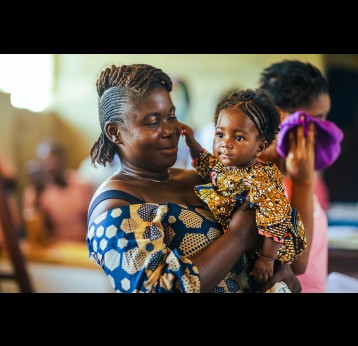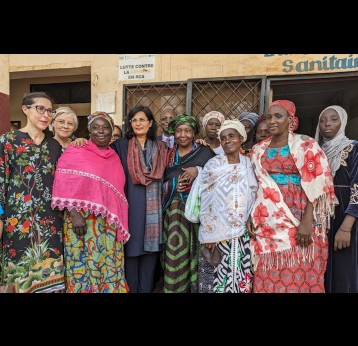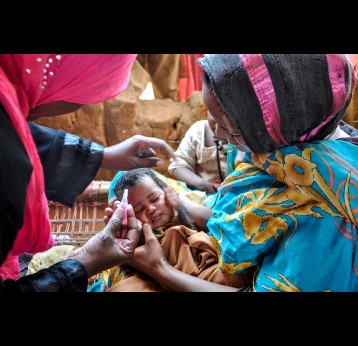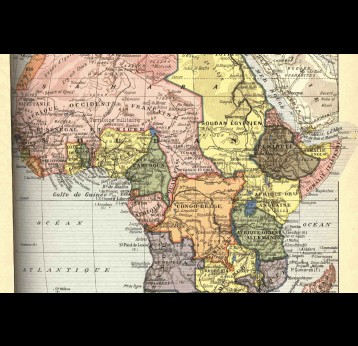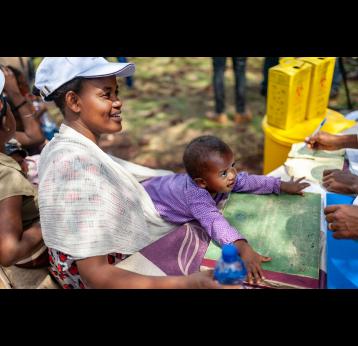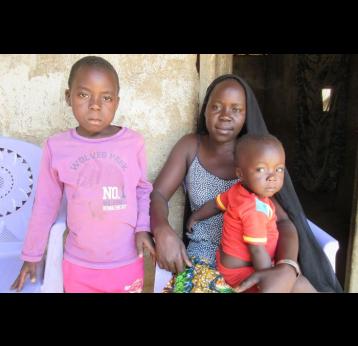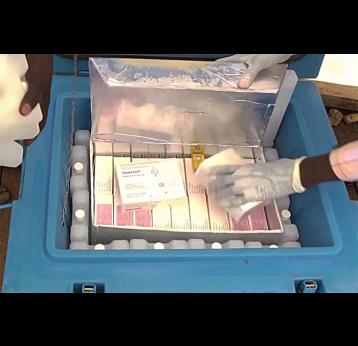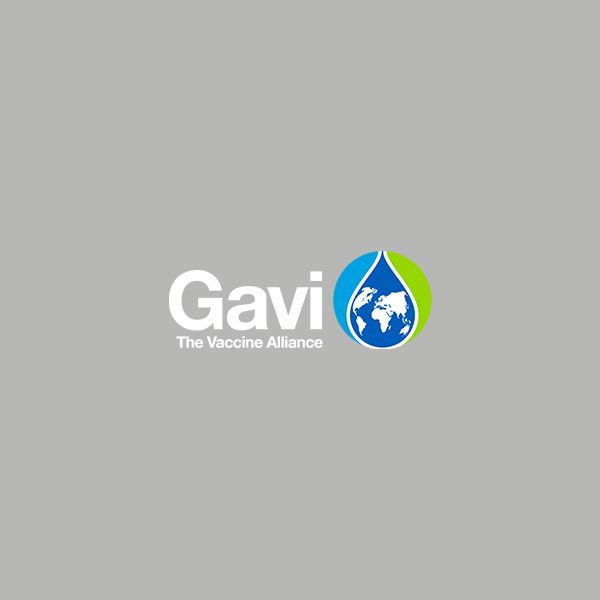Country Information
Key immunisation indicators
Data sourcesApprovals are a subset of commitments for which funding availability and programme performance has been assessed as satisfactory. Only such approved amounts can be disbursed subject to all other conditions for disbursement being met by the countries. Approvals are typically granted for the current year and one further year.
Commitments represent endorsements of multi-year programme budgets made by the Gavi Board, Executive Committee or the CEO. These endorsements do not constitute a liability to pay but instead send a positive signal that Gavi intends to fund a programme over its entire life span subject to performance and availability of funds.
Disbursements by 'Programme Year' in the graph shows the payments made from 2020 up to the date of the report. The payments are shown by the programme year to which they relate irrespective of the calendar year in which they were made. The programme year is the year in which the relevant vaccine/cash programme is being implemented.
Annual figures may reflect negative values due to refunds from previous years or allocation of prepayments to reflect actual apportionment by country.
Disclaimer: the boundaries and names shown and the designations used on this map do not imply the expression of any opinion whatsoever on the part of Gavi, the Vaccine Alliance concerning the legal status of any country, territory, city or area or of its authorities, or concerning the delimitation of its frontiers or boundaries. Dotted lines on maps represent approximate border lines for which there may not yet be full agreement.
This Gavi country data is made available under the Creative Commons BY 4.0 license: https://creativecommons.org/licenses/by/4.0/
Latest News
All News
With two recommended vaccines and expanded supply, Gavi, UNICEF, WHO are working closely with governments and partners to increase malaria prevention and protection for children.
Gavi increases support to reach all children with immunisation in the Central African Republic
Gavi to increase its financial support to strengthen data systems, bolster health workforce and engagement at community level, and foster innovation for enhancing outreach to better identify and reach missed children.
Funding disbursed to boost vaccine access in humanitarian and fragile settings
The funding will enable international and local civil society organisations to complement public health service efforts by accessing communities not reached by government services, such as in cross-border settings and conflict zones, across the…
Is the colonial era still impacting people’s health today?
A new study suggests that historical traumas from the French colonial era may be associated with less trust in modern medicine and lower vaccination rates today.
Subscribe to our newsletter
Data sources
| Name | Source | Date |
|---|---|---|
| Total population | United Nations, World Population Prospects (UN WPP), July 2024 release. | 2024-07-11 |
| Birth cohort (Total number of live births) | United Nations, World Population Prospects (UN WPP), July 2024 release. | 2024-07-11 |
| Surviving infants (# of children surviving to 1 year) | United Nations, World Population Prospects (UN WPP), July 2024 release. | 2024-07-11 |
| Infant mortality rate (deaths < 1 year per 1000 births) | UN Inter-agency Group for Child Mortality Estimation (UN IGME), March 2024 release. | 2024-04-15 |
| Child mortality rate (deaths < 5 years per 1000 births) | UN Inter-agency Group for Child Mortality Estimation (UN IGME), March 2024 release. | 2024-04-15 |
| GNI per capita, Atlas method (current US$) | World Bank national accounts data, and OECD National Accounts data files, July 2024 release. | 2024-07-01 |
| Number of zero-dose children | WHO/UNICEF Estimates of National Immunization Coverage (WUENIC), July 2024 release; figures calculated using number of surviving infants from UN World Population Prospects (UN WPP) | 2024-07-15 |
| % reduction in number of zero-dose children, 2019-2023 | WHO/UNICEF Estimates of National Immunization Coverage (WUENIC), July 2024 release; figures calculated using number of surviving infants from UN World Population Prospects (UN WPP) | 2024-07-15 |
| DTP1/DTP3/MCV1 coverage (%) | WHO/UNICEF Estimates of National Immunization Coverage (WUENIC), July 2024 release. | 2024-07-15 |
| Drop out from DTP1 to DTP3 | WHO/UNICEF Estimates of National Immunization Coverage (WUENIC), July 2024 release | 2024-07-15 |
| Drop out from DTP1 to last routine dose of MCV | WHO/UNICEF Estimates of National Immunization Coverage (WUENIC), July 2024 release. | 2024-07-15 |
| Geographic equity of DTP3 coverage: DTP3 coverage in the 20% of districts with lowest coverage | WHO/UNICEF Joint Reporting Form (JRF), July 2024 release. | 2024-07-05 |

